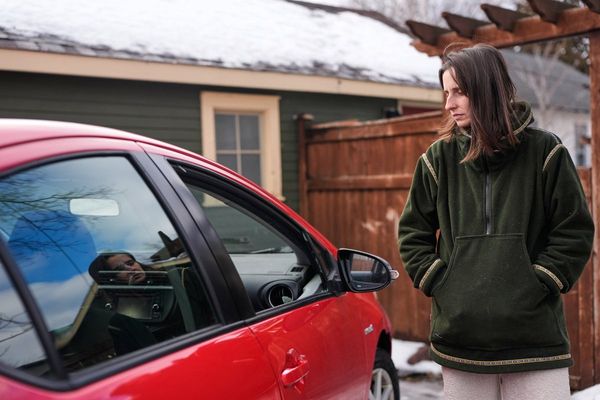By 2040, according to one estimate, 20 lakh people a year will be diagnosed with cancer in India. Cancer is already the third leading cause of death in India. In the coming years, it is expected to take over heart disease and infections as well. The Indian health system has tried adjusting to these changing health needs, but there is a particularly important issue.
(For top health news of the day, subscribe to our newsletter Health Matters)
The money spent by a patient on an ailment is the highest for cancer. The Pradhan Mantri Jan Arogya Yojana (PMJAY) has offered some respite by providing health insurance of Rs 5 lakh per family per year.
But despite this support, people are financially destroyed by cancer and its treatment. A June 2023 study reported that even among patients with PMJAY or other state-sponsored health insurance coverage, cancer treatment rendered catastrophic health expenses in more than 80% and impoverishment in more than 60% of people.
(The author is currently assessing the duration and reasons for delay in oral-cancer diagnosis and treatment at a government cancer care hospital in Delhi. The anecdotes that follow are from this assessment.)
Where do the expenses arise?
The government provides free cancer care. These devastating costs arise in the private sector.
Also Read | Explained: How accurate are India’s cancer registries?
Ideally, one’s out-of-pocket expenditure (OOPE) for health should be zero. But the sheer burden of disease plus an underfunded public health system forces people to access care in the private healthcare system in India. This worsens the financial burden by adding to the direct and/or indirect OOPE. Direct medical OOPE includes doctor’s consultation fees, cost of medicines, and medical tests, and direct non-medical OOPE includes costs of transport, accommodation, and food for people travelling to larger cities for treatment. Indirect OOPE accounts for loss of productive hours and/or income.
“The blood investigations here take at least 10 days to be reported,” a 60-year-old man with oral cancer seeking care in a government hospital in Delhi told me. “If I wait for the report, I will miss my next chemotherapy dose. The private lab charges Rs 300 but reports in a day.”
He has a family of six to look after and makes Rs 6,000 a month, so even Rs 300 was a struggle for him to arrange. Similarly, the waiting time for MRI scans in Delhi hospitals can be as long as two years, forcing patients – especially the ones with cancer – to get investigated at private centres.
What makes the financial fallout worse?
Delays allow the disease to worsen, but they happen if patients have to struggle to get an early date for treatment in overburdened government hospitals.
“The earliest date for radiation therapy was available only after six months,” said a young man who was struggling to make ends meet and have his mother’s breast cancer treated. “We started chemotherapy here and are getting radiation therapy at a private centre. It is costing us 1.5 lakh rupees.”
The financial fallout of cancer is worse when it affects the breadwinner of the family. In an ongoing study by this author, nine out of ten patients with oral cancer either lost their jobs or stopped working after being diagnosed with cancer. Most of these people were the sole earning members of their families. Compared to the general population, people with cancer are at seven times greater risk of unemployment within five years after diagnosis.
Cancer diagnosis has a similar impact on caregivers. “I lost my job in the village as I have been in Delhi for the past year for my wife’s treatment for breast cancer,” said one man who now earns Rs 100-200 a day doing menial jobs in the city.
How high are the other costs?
Since cancer care is concentrated in major cities, most people from rural India, where 60-70% of the country’s population lives, have to leave home and travel hundreds of kilometres to seek care. The cost of accommodation in these cities adds to their woes.
“Our rent is Rs 7,000 monthly and our son earns Rs 15,000 monthly,” one woman said through tears. “Since my husband was diagnosed with cancer, we have borrowed nearly three lakh rupees.” According to a 2021 study, the amount spent on accommodation, food, and travel by patients seeking care in JIPMER Puducherry was nearly 15-times the amount spent directly on medical care.
Even though the Indian Railways and Air India provide concessions on travel tickets for cancer patients, according to the author’s ongoing study, expenses for local transport contribute significantly as well.
“The bus ticket costs Rs 100 one way for the two of us to travel,” said one woman whose husband was receiving chemotherapy for oral cancer in a government hospital in Delhi. “On most days, he is too sick to travel by bus and auto-drivers charge Rs 350. Today, we had to borrow money from our neighbours to travel to the hospital for treatment.”
Are governments helping?
Borrowing money and selling assets has been identified to be a common strategy that disproportionately affects people from rural areas.
Governments have identified these issues in some parts of the country and made some efforts to address them. For example, in 2012, the Haryana government made transport for patients with cancer and one caregiver in public buses from their places of residence to their places of treatment free. Similar efforts have been made in Kerala, where patients with cancer are eligible for 50% concession on public bus tickets.
To improve compliance with care, patients travelling to seek care in Cachar Cancer Hospital and Research Center in Assam are given financial support for travel as well as free accommodation and food.
In 2017, Delhi launched the Arogya Kosh scheme to reduce the burden on public health centres and avoid treatment delays. Here, residents of Delhi making less than Rs 3 lakh a year are eligible to get certain tests, like ultrasound and CT scans, in private health centres for free. However, 93% of people seeking care in government hospitals in Delhi were found to be unaware of the scheme, reducing the scheme’s uptake.
Haryana, Tripura, and Kerala have also floated a ‘cancer pension’ to financially assist patients with advanced-stage cancer: Rs 2,500 per month in Haryana and Rs 1,000 in Tripura and Kerala.
What is a permanent solution?
The most obvious solution to such post-cancer problems is to open publicly funded cancer care centres in every nook and corner of India. Of course, at this time, this sounds unrealistic and will require decades to implement.
But the fact is that until cancer care becomes as accessible as diabetes or hypertension care, we will need to continue to provide financial support to those who are suffering, either directly or indirectly, and their families. Free cancer care alone won’t save our people from poverty and suffering.
Parth Sharma is a public health physician, researcher, and the founder of Nivarana.org, a public health information and advocacy platform.







